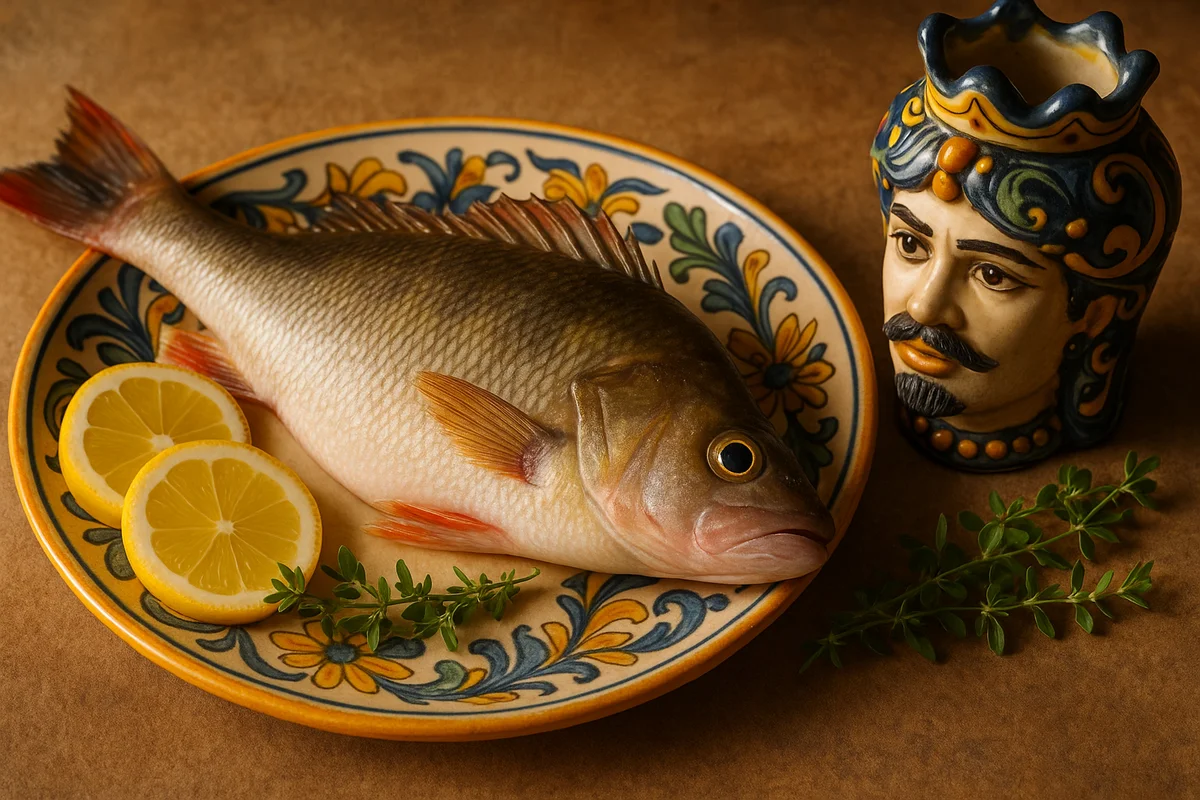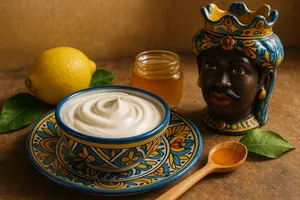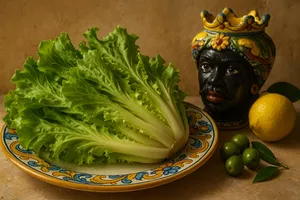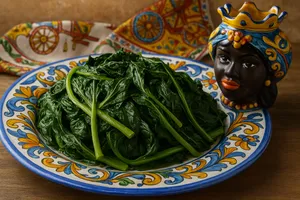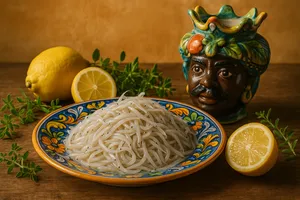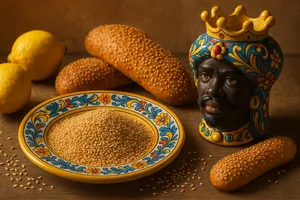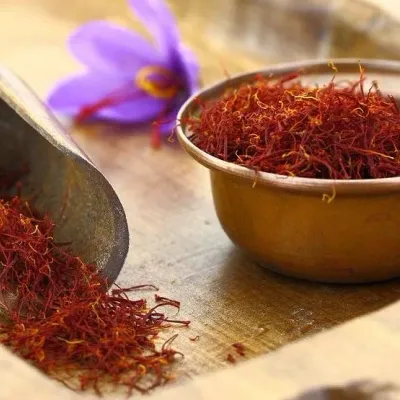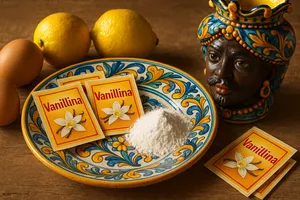Overview
Perch, known in Sicilian as "persicu", is a freshwater fish belonging to the Percidae family, found in lakes and rivers across Europe. In Sicily, where freshwater courses are limited and often seasonal, perch has not traditionally been as abundant as in other Italian regions rich in lakes. Nevertheless, it has been introduced into certain artificial reservoirs and Sicilian lakes where it has adapted, and it is valued for its white, delicate, lean flesh, free from troublesome bones, with a fine, gentle flavour that lends itself to simple preparations showcasing its quality.
In Sicilian cookery, perch does not enjoy the same tradition as sea fish, which is abundant in the waters surrounding the island. However, in inland areas where reservoirs and lakes exist, or where it is caught and sold, it is prepared following the principles of Sicilian fish cookery: fried, pan-cooked with Mediterranean herbs, or baked. Its delicate flesh benefits from quick cooking methods that do not overshadow its natural flavour. It is considered a refined fish, suitable for elegant dishes, and is often served in restaurants as an alternative to sea fish for those who prefer subtler flavours.
Characteristics
Perch has an oval, laterally compressed body, measuring between 20 and 50 cm (the largest specimens may exceed 50 cm), and weighing from 200g to over 2 kg. Its colouring is green-yellow on the back, silvery on the sides, with characteristic dark vertical bands. It has two dorsal fins, the first equipped with spiny rays.
The flesh is white, firm, lean, with few bones that are easily removed. The texture is compact yet delicate. The flavour is fine and mildly sweet, with little “fishiness”, making it popular even among those who do not enjoy strongly flavoured fish. It lacks any strong odour, a sign of freshness and quality.
Fresh perch has bright, prominent eyes, red gills, a firm and glossy body, and a delicate freshwater scent. Like all fish, it deteriorates quickly and should be eaten very fresh or stored properly.
Habitat and fishing
Perch is native to central and northern Europe, inhabiting lakes, rivers, and ponds with cool, well-oxygenated waters. It prefers sandy or gravelly bottoms with vegetation. It is a predatory fish feeding on smaller fish, invertebrates, and larvae.
In Sicily, where perennial freshwater courses are rare and natural lakes do not exist, perch has been introduced into artificial reservoirs (dam lakes and basins) where it has acclimatised. Fishing is practised by sport anglers and, to a lesser extent, professionals. It is not as abundant as in Lombardy or other lake-rich regions.
Sport fishing for perch is appreciated for the fish’s spirited fight. It is caught with rod and line, using artificial or natural baits (worms, small fish). Minimum size limits must be respected to allow reproduction.
Seasonality
Perch is mainly caught in spring and summer, when it is most active and its flesh at its best. In winter it retreats to deeper waters and is less accessible. Availability in Sicilian markets is limited and depends on local fishing or imports from northern Italian lake regions.
Culinary use
Perch lends itself to various preparations, all aimed at highlighting the delicacy of its flesh.
Fried perch
The most classic preparation. The fillets are floured (or dipped in egg and breadcrumbs) and fried in hot oil until golden. The result is crisp outside and tender within, with a gentle flavour. Served with lemon.
Pan-cooked perch
The fillets are cooked in a pan with a little oil, garlic, parsley, and lemon. It is a quick preparation that preserves the qualities of the fish. Cherry tomatoes or capers may be added for extra flavour.
Baked perch
The whole fish or fillets are baked with oil, lemon, herbs, and potatoes. Baking is gentle and preserves the moisture of the flesh.
Steamed perch
For an exceptionally light preparation, steaming preserves all nutritional qualities and the delicate flavour. It is seasoned after cooking with extra virgin olive oil and lemon.
Breaded fillets
The fillets are coated in flour, egg, and breadcrumbs, then fried or baked. This preparation is also popular with children thanks to its delicacy and the absence of troublesome bones.
Preparation
Perch requires thorough cleaning. If whole, it must be scaled, gutted, and washed. The spiny dorsal fins should be removed with care. Many prefer to buy it already cleaned and filleted for convenience.
Filleting is relatively simple: cuts are made along the backbone, the fillets are detached, and any remaining bones removed with tweezers. The fillets are clean, skinless (the skin removes easily), and ready for cooking.
Perch does not require marinades or complex preparations. Its delicacy is its strength, so simple cooking methods are best.
Storage
Fresh perch keeps in the refrigerator, in the coldest part, for a maximum of 1–2 days. It should be covered, ideally kept on ice. Like all fish, it deteriorates rapidly.
It can be frozen: cleaned and filleted, vacuum-sealed or placed in airtight bags, it keeps for 2–3 months. It should be thawed slowly in the refrigerator and cooked immediately afterwards.
Tips for buying
When buying perch, check for absolute freshness: bright eyes, red gills, firm body, delicate scent. Avoid fish with dull eyes, dark gills, limp flesh, or a strong odour.
Choose fish of medium size (300–500g), which have superior flesh. Very small fish offer little meat, while very large specimens may have less delicate flesh.
Perch is relatively expensive owing to its high-quality flesh and limited availability. Check its provenance: fish from clean, well-managed waters is preferable.
Nutritional properties
Perch is very lean: 100g provide about 80–90 calories. It contains roughly 18–20g of high-quality protein, 1–2g of fat (mainly unsaturated), and zero carbohydrates. It is rich in B vitamins, vitamin D, and minerals such as phosphorus, potassium, and selenium.
It is an excellent choice for low-calorie diets, easily digestible, and suitable for children, the elderly, and those recovering from illness. Its lean white flesh is often recommended by nutritionists as a healthy alternative to red meat.
Perch vs other fish
Compared with other fish, perch has more delicate flesh than sea bass or gilthead bream, a less pronounced “marine” flavour, a firmer texture than sole, and less fat than salmon or oily fish. It is valued by those who prefer fish with a subtle, almost neutral taste.
Curiosities
Perch is considered a “noble” fish in many European cuisines and is served in refined restaurants. In France (“perche”) and Switzerland it is particularly esteemed.
In Sicily, as a non-traditional and relatively uncommon fish, it is often regarded as a speciality for connoisseurs. Some restaurants offer it as a refined alternative to sea fish.
Sport fishing for perch is widely practised in Sicilian artificial basins by local anglers, who often enjoy it at home, fried or pan-cooked according to simple recipes.
The perch trout (or largemouth bass), a different species often confused with the European perch, is native to North America and has been introduced into many Italian basins. It grows larger and has flesh of comparable quality.
An old saying claims that “perch is the prince of freshwater fish”, owing to the quality of its flesh and the elegance of its form. It has been appreciated since ancient Roman times.

